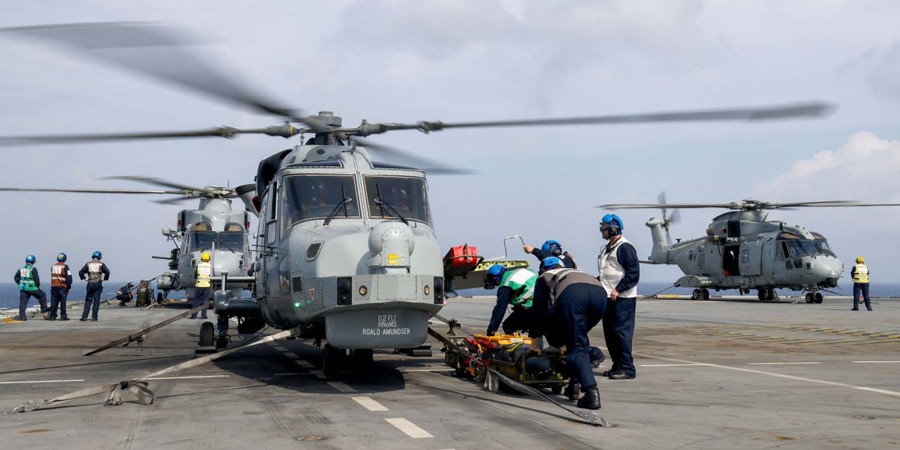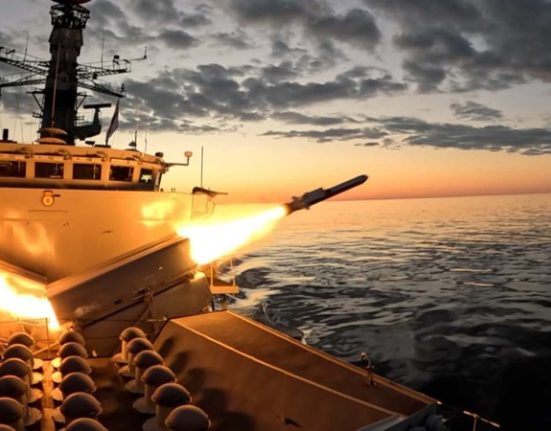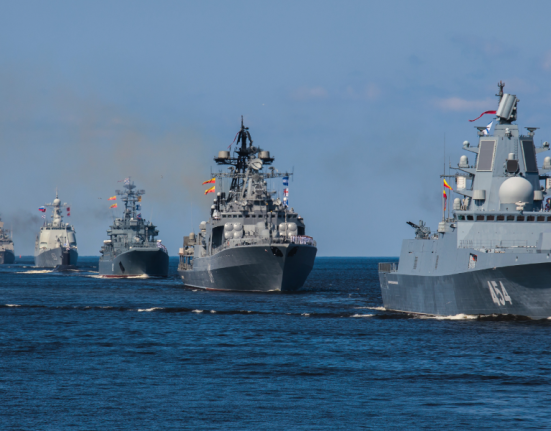Sea Venom missile reaches frontline readiness
The Royal Navy has taken a major leap in firepower with its Wildcat maritime attack helicopters now fully armed with Sea Venom ship-busting missiles, following the weapon’s achievement of Initial Operating Capability (IOC).
The milestone means the new anti-ship missile can now be deployed on frontline duties – a move senior commanders described as a “transformational step” for the Fleet Air Arm.
Wildcat helicopters can carry up to four Sea Venoms, allowing them to strike multiple targets in a single sortie or unleash a devastating salvo against larger enemy vessels such as corvettes or coastal patrol ships.
The system complements the Martlet missile, already in service for short-range engagements against smaller threats like fast-attack craft and boat swarms.
Deployed on operation highmast
IOC was reached during Operation Highmast, the Royal Navy’s global Indo-Pacific deployment led by HMS Prince of Wales. Four Wildcats from 815 Naval Air Squadron are now equipped with Sea Venom, operating across the Carrier Strike Group aboard HMS Prince of Wales, destroyer HMS Dauntless, and the Norwegian frigate HNoMS Roald Amundsen.
Commander James Woods, Commanding Officer of 815 NAS, said the addition of Sea Venom was a “step-change in combat power.” He added “It delivers a lethal combination of precision, reach, and flexibility that allows us to strike decisively against a wide spectrum of threats,” he said. “Most importantly, it gives us the ability to neutralise those threats at range. This is a transformational capability for the Fleet Air Arm.”
Precision strike from sea to shore
Sea Venom forms part of the UK’s Future Anti-Surface Guided Weapon (FASGW) programme, providing long-range strike capability. The missile features advanced infrared imaging and an operator-in-the-loop system, allowing pilots to make mid-flight adjustments and fine-tune targeting in real time.
It’s optimised for use against warships but can also hit coastal installations and land-based targets with pinpoint accuracy.
Commander Andrew Henderson, who leads the Wildcat Maritime Force, said: “Integrating Sea Venom at sea represents a significant enhancement to the Royal Navy’s lethality. Its precision and versatility ensure our crews are equipped to meet the demands of a complex, multi-domain environment.”
Strengthening carrier strike power
The deployment underscores Britain’s renewed maritime reach, with the Carrier Strike Group operating alongside allies across the Mediterranean, Middle East and Indo-Pacific.
Commodore James Blackmore, Commander of the UK Carrier Strike Group, said: “Achieving IOC with Sea Venom ensures our carrier force remains world-class. It strengthens our ability to safeguard the maritime environment, reassure allies, and deter adversaries.”
With the integration of Sea Venom, the Royal Navy’s Wildcats are now among the most capable maritime helicopters in the world – delivering precision strike power from the sea, and reaffirming the UK’s role as a leading naval force on the global stage.




